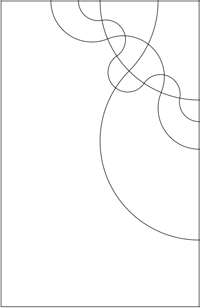 One of my dubious claims to fame is that I believe that in my youth I may have created the world’s first ten-set Venn diagram.
One of my dubious claims to fame is that I believe that in my youth I may have created the world’s first ten-set Venn diagram.
Not single-handedly, of course. As with most of my endeavours, there were a few convenient giants’ shoulders in the vicinity.
Here’s the story, if you’d like to know more.
Reminds me of a story of similar vintage. The university’s computing service had recently taken delivery of a laser printer and made it available to all, with a per-page printing charge and a printing queue. The queue wasn’t just first-come-first-served: smaller jobs moved more quickly than slower ones. A friend – we’ll call him Pete – was excited about the potential for producing high-res printouts of the Mandelbrot set (a geek attractor of the time). However, the data to produce a Mandelbrot set at 300dpi would be vast (like, megabytes or something unimaginable), and would take days and days to reach the front of the print queue. So Pete promptly wrote a Mandelbrot-generating program in PostScript and submitted *that* to the print queue. At a few lines of code, it shot to the front of the queue … and then tied up the printer for ages for a single sheet.